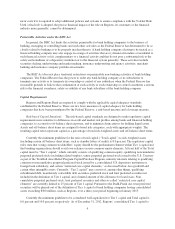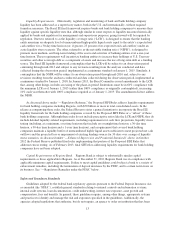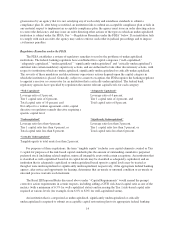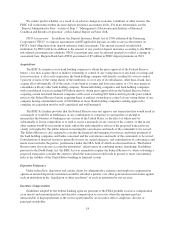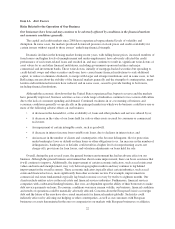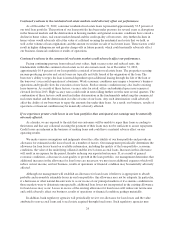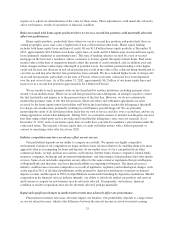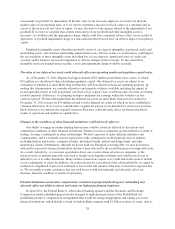Regions Bank 2012 Annual Report Download - page 35
Download and view the complete annual report
Please find page 35 of the 2012 Regions Bank annual report below. You can navigate through the pages in the report by either clicking on the pages listed below, or by using the keyword search tool below to find specific information within the annual report.In January 2010, the FDIC announced that it would seek public comment on whether banks with
compensation plans that encourage risky behavior should be charged higher deposit assessment rates than such
banks would otherwise be charged. The comment period ended in February 2010. As of February 2013, a final
rule has not been adopted.
In June 2010, the Federal Reserve issued comprehensive guidance on incentive compensation policies (the
“Incentive Compensation Guidance”) intended to ensure that the incentive compensation policies of banking
organizations do not undermine the safety and soundness of such organizations by encouraging excessive risk-
taking. The Incentive Compensation Guidance, which covers all employees that have the ability to materially
affect the risk profile of an organization, either individually or as part of a group, is based upon the key principles
that a banking organization’s incentive compensation arrangements should (i) provide incentives that do not
encourage risk-taking beyond the organization’s ability to effectively identify and manage risks, (ii) be
compatible with effective internal controls and risk management, and (iii) be supported by strong corporate
governance, including active and effective oversight by the organization’s board of directors. Any deficiencies in
compensation practices that are identified may be incorporated into the organization’s supervisory ratings, which
can affect its ability to make acquisitions or perform other actions. The Incentive Compensation Guidance
provides that enforcement actions may be taken against a banking organization if its incentive compensation
arrangements or related risk-management control or governance processes pose a risk to the organization’s safety
and soundness and the organization is not taking prompt and effective measures to correct the deficiencies.
In April 2011, the Federal Reserve, other federal banking agencies and the Securities and Exchange
Commission jointly published proposed rulemaking designed to implement provisions of the Dodd-Frank Act
prohibiting incentive compensation arrangements that would encourage inappropriate risk taking at a covered
institution, which includes a bank or bank holding company with $1 billion or more of assets, such as Regions
and Regions Bank. The proposed rule (i) prohibits incentive-based compensation arrangements that encourage
executive officers, employees, directors or principal shareholders to expose the institution to inappropriate risks
by providing excessive compensation (based on the standards for excessive compensation adopted pursuant to
the FDIA) and (ii) prohibits incentive-based compensation arrangements for executive officers, employees,
directors or principal shareholders that could lead to a material financial loss for the institution. The proposed
rule requires covered institutions to establish policies and procedures for monitoring and evaluating their
compensation practices. Institutions with consolidated assets of $50 billion or more, such as Regions, are subject
to additional restrictions on compensation arrangements for their executive officers and any other persons
indentified by the institution’s board of directors as having the ability to expose the institution to substantial
losses. The comment period ended in May 2011, but final rules have not been adopted as of February 2013.
These regulations may become effective before the end of 2013. If the regulations are adopted in the form
initially proposed, they will impose limitations on the manner in which we may structure compensation for our
executives.
The scope and content of the U.S. banking regulators’ policies on incentive compensation are continuing to
develop. It cannot be determined at this time whether a final rule will be adopted and whether compliance with
such a final rule will adversely affect the ability of Regions and its subsidiaries to hire, retain and motivate their
key employees.
Financial Privacy
The federal banking regulators have adopted rules that limit the ability of banks and other financial
institutions to disclose non-public information about consumers to non-affiliated third parties. These limitations
require disclosure of privacy policies to consumers and, in some circumstances, allow consumers to prevent
disclosure of certain personal information to a non-affiliated third party. These regulations affect how consumer
information is transmitted through diversified financial companies and conveyed to outside vendors. In addition,
consumers may also prevent disclosure of certain information among affiliated companies that is assembled or
used to determine eligibility for a product or service, such as that shown on consumer credit reports and asset and
19


